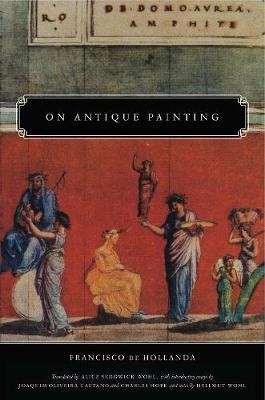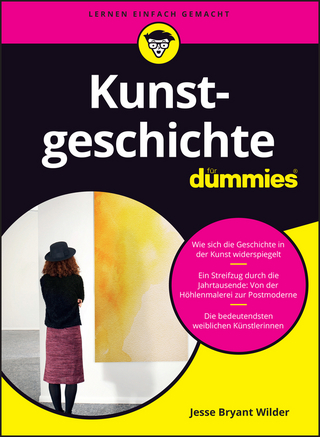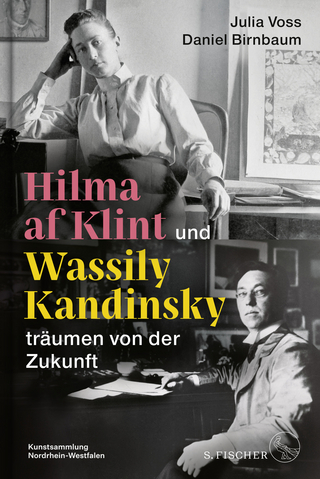
On Antique Painting
Pennsylvania State University Press (Verlag)
978-0-271-05966-2 (ISBN)
- Titel z.Zt. nicht lieferbar
- Versandkostenfrei innerhalb Deutschlands
- Auch auf Rechnung
- Verfügbarkeit in der Filiale vor Ort prüfen
- Artikel merken
Francisco de Hollanda completed Da pintura antigua in 1548, eight years after the young Portuguese humanist, painter, and architect had spent two years in Italy. Book I is the first Portuguese treatise on the theory and practice of painting. In contrast to Italian texts on artistic theory, which define painting as the imitation of nature, Hollanda’s treatise, influenced by Neoplatonism, develops a theory of the painter as an original creator guided by divine inspiration. Book II, “Dialogues in Rome,” is a record of three conversations with Michelangelo, Vittoria Colonna, and members of their circle and a fourth with Giulio Clovio. It is the most informative and intimate intellectual portrait of Michelangelo before the biographies by Vasari and Condivi.
Alice Sedgwick Wohl is an independent scholar and translator. Joaquim Oliveira Caetano is Curator of the Museu Nacional de Arte Antiga in Lisbon. Charles Hope is the retired former director of the Warburg Institute in London. Hellmut Wohl is Professor Emeritus of Art History at Boston University.
Introduction
Note on the Early Years of the Portuguese Empire
Alice Sedgwick Wohl
Francisco de Hollanda (1517–1584): The Fascination of Rome and the Times in Portugal
Joaquim Oliveira Caetano
Francisco de Hollanda and Art Theory, Humanism, and Neoplatonism in Italy
Charles Hope
On Antique Painting
Book I
Prologue
Chapter I: How God Was a Painter
Chapter II: What Painting Is
Chapter III: On the First Painters
Chapter IV: Which Was the Fatherland of Painting
Chapter V: When Painting Was Lost, and When It Was Rediscovered
Chapter VI: How the Holy Mother Church Preserves Painting
Chapter VII: What the Painter Must Be
Chapter VIII: What Sciences Are of Use to the Painter
Chapter IX: By What Means the Painter Must Learn
Chapter X: The Second Thing from Which He Must Learn
Chapter XI: The Difference of Antiquity
Chapter XII: Why Antique Painting Is Celebrated and What It Is
Chapter XIII: How the Precept of Antique Painting Spread Through the Whole World
Chapter XIV: Concerning Some Precepts of Antiquity, and First, Concerning the Invention
Chapter XV: Concerning the Idea, What It Is in Painting
Chapter XVI: In What the Power of Painting Consists
Chapter XVII: Of the Proportion of the Body
Chapter XVIII: On Anatomy
Chapter XIX: On Physiognomy
Chapter XX: Precept for Antique Figures Standing Still
Chapter XXI: On Antique Figures That Move or Walk or Run or Fight
Chapter XXII: On Antique Figures That Are Seated and [Those That Are] Recumbent
Chapter XXIII: On Antique Equestrian Statues
Chapter XXIV: On the Ornament and Costume of the Ancients in Their Images
Chapter XXV: On Painting Animals
Chapter XXVI: On the Composition of Antique Historias
Chapter XXVII: On Painting Sacred Images, and First, Images of Our Savior
Chapter XXVIII: On Painting Images of the Invisible
Chapter XXIX: On the Divine Image
Chapter XXX: On Other Images of the Invisible, Such as the Virtues
Chapter XXXI: On Invisible Forms Such as the Vices
Chapter XXXII: On Painting Purgatory and Hell
Chapter XXXIII: On Painting Eternity and Glory, and the World
Chapter XXXIV: On Light or Brightness in Painting
Chapter XXXV: On Shade and Darkness in Painting
Chapter XXXVI: On Black and White
Chapter XXXVII: On the Colors
Chapter XXXVIII: On Decorum or Decency
Chapter XXXIX: On Perspective
Chapter XL: On the Point at Which the Painting Converges
Chapter XLI: On Foreshortening
Chapter XLII: On Statuary Painting or Sculpture
Chapter XLIII, Part 1: On Painting as Architect
Chapter XLIII, Part 2: On Painting as Architect
Chapter XLIV, Part 1: On All the Types and Modes of Painting
Chapter XLIV, Part 2: On All the Types and Modes of Painting
Table of Some Rules for Painting
Book II
Prologue
First Dialogue
Second Dialogue
Third Dialogue
Fourth Dialogue
Table of the Famous Modern Painters Whom They Call Eagles
Proverbs About Painting
Remembrance
Appendix A: Chronology of Popes and Rulers
Appendix B: Works by Francisco de Hollanda
Glossary
Bibliography
Subject Index
Index of Names and Places
| Erscheint lt. Verlag | 15.6.2015 |
|---|---|
| Einführung | Joaquim Oliveira Caetano, Charles Hope |
| Mitarbeit |
Anmerkungen: Hellmut Wohl |
| Übersetzer | Alice Sedgwick Wohl |
| Zusatzinfo | 10 Halftones, black and white |
| Verlagsort | University Park |
| Sprache | englisch |
| Maße | 152 x 229 mm |
| Gewicht | 454 g |
| Themenwelt | Kunst / Musik / Theater ► Kunstgeschichte / Kunststile |
| Kunst / Musik / Theater ► Malerei / Plastik | |
| ISBN-10 | 0-271-05966-4 / 0271059664 |
| ISBN-13 | 978-0-271-05966-2 / 9780271059662 |
| Zustand | Neuware |
| Haben Sie eine Frage zum Produkt? |
aus dem Bereich


